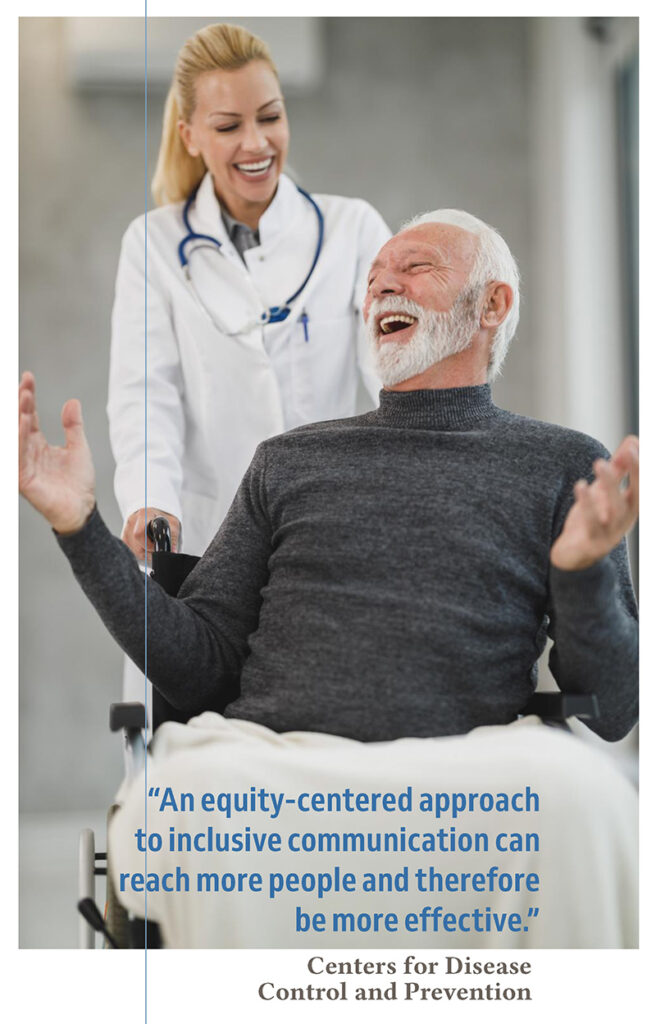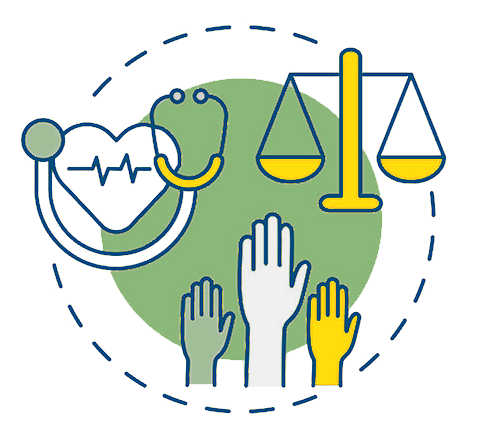
Hollins University is one of the first in the nation to offer certification in Medical Communications and Equity.
The Certificate program provides a new level of understanding of the principles, resources, and best practices for the development of inclusive communication strategies to engage stakeholders, to connect with communities, to illuminate the needs of patients and families who are underserved by the healthcare system, and to shape policy conversations central to the work of improving healthcare access and outcomes for everyone. Students will gain a deeper understanding of models and theories of health communication, the role of medical communications in community building, ethical issues, interpreting data, and using medical communications for advocacy.

Program Overview
The Medical Communications and Equity Certificate program consists of 20 credit hours. The six required courses will run at an accelerated rate, allowing for the program to be completed in as little as two semesters.
Throughout the program, students will develop a Community Health Needs Assessment (CHNA) one of the fundamental communication tools used by hospitals, health departments, and government agencies to identify and address healthcare needs specific to their community or organization.
Each course will inform the CHNA by examining the principles and theories of effective medical communication to shape attitudes and actions about health and healthcare.
Students will learn how to design and implement health campaigns, enhance the work of community building through communications, understand the American Medical Writers Code of Ethics, learn different forms of medical writing, develop methods for interpreting data and report findings, and how to use medical communications to advocate for policy change and address the social determinants of health.
Program Schedule
Each term will include seven-week and fifteen-week options as follows:
Spring
- Health Communications (4 credits)
- Statistics and Data Representation (4 credits)
- Medical Communications Ethics (4 credits)
Fall
- Medical Writing: Communicating with Diverse Stakeholders (4 credits)
- Community Building Through Medical Communications (4 credits)
- Advocacy and Medical Communications (4 credits)
Application deadlines: August 19 for fall consideration; January 22 for spring consideration
Upload Image in Upper Single Testimonial block
“All people should be able to access and understand health promotion and disease prevention information without stigmatization of themselves or others.”
Select link in Lower Single Testimonial block
Our Commitment
“An equity-centered approach to inclusive communication can reach more people and therefore be more effective.” ~ Centers for Disease Control and Prevention
Hollins University is committed to addressing diversity, equity, inclusion, and belonging throughout the fabric of the institution, including our course offerings. As the demand for healthcare workers continues to grow, so does the need for the inclusion of equity in medical communications. Health equity requires focused and ongoing societal efforts to address historical and contemporary injustices; overcome economic, social, and other obstacles to the best health and health care; and eliminate preventable health disparities. One of the most effective methods is intentionally considering the potential positive and negative impacts of medical communications, including how messaging can reduce or contribute to inequities.
The Centers for Disease Control and Prevention states that medical communication is one of the ten essential public health services.
Effective medical communications inform and educate people about health, factors that influence it, and how to improve it. It informs the public, health care providers, public health practitioners, communities, and partners from other sectors on how to approach the health of all communities in ways that can reduce risks and improve health and safety.



